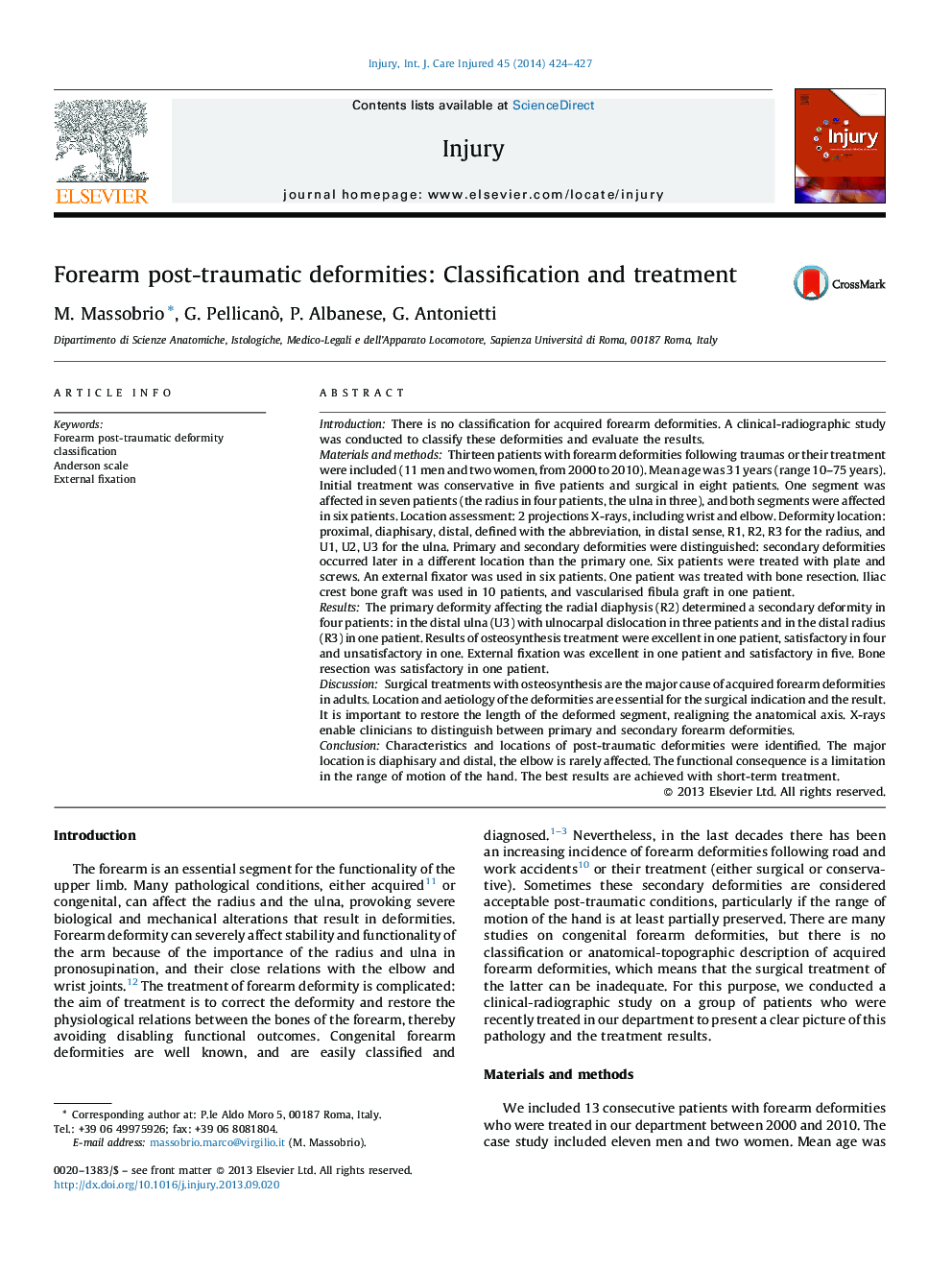| کد مقاله | کد نشریه | سال انتشار | مقاله انگلیسی | نسخه تمام متن |
|---|---|---|---|---|
| 3239597 | 1206012 | 2014 | 4 صفحه PDF | دانلود رایگان |
IntroductionThere is no classification for acquired forearm deformities. A clinical-radiographic study was conducted to classify these deformities and evaluate the results.Materials and methodsThirteen patients with forearm deformities following traumas or their treatment were included (11 men and two women, from 2000 to 2010). Mean age was 31 years (range 10–75 years). Initial treatment was conservative in five patients and surgical in eight patients. One segment was affected in seven patients (the radius in four patients, the ulna in three), and both segments were affected in six patients. Location assessment: 2 projections X-rays, including wrist and elbow. Deformity location: proximal, diaphisary, distal, defined with the abbreviation, in distal sense, R1, R2, R3 for the radius, and U1, U2, U3 for the ulna. Primary and secondary deformities were distinguished: secondary deformities occurred later in a different location than the primary one. Six patients were treated with plate and screws. An external fixator was used in six patients. One patient was treated with bone resection. Iliac crest bone graft was used in 10 patients, and vascularised fibula graft in one patient.ResultsThe primary deformity affecting the radial diaphysis (R2) determined a secondary deformity in four patients: in the distal ulna (U3) with ulnocarpal dislocation in three patients and in the distal radius (R3) in one patient. Results of osteosynthesis treatment were excellent in one patient, satisfactory in four and unsatisfactory in one. External fixation was excellent in one patient and satisfactory in five. Bone resection was satisfactory in one patient.DiscussionSurgical treatments with osteosynthesis are the major cause of acquired forearm deformities in adults. Location and aetiology of the deformities are essential for the surgical indication and the result. It is important to restore the length of the deformed segment, realigning the anatomical axis. X-rays enable clinicians to distinguish between primary and secondary forearm deformities.ConclusionCharacteristics and locations of post-traumatic deformities were identified. The major location is diaphisary and distal, the elbow is rarely affected. The functional consequence is a limitation in the range of motion of the hand. The best results are achieved with short-term treatment.
Journal: Injury - Volume 45, Issue 2, February 2014, Pages 424–427
